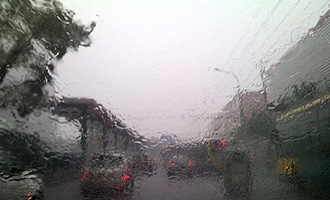| Driving in Bad Weather | << Back to Education |
Driving in Rain & Monsoons
Driving in wet conditions can be hazardous, but you have a better chance of staying safe if you prepare for wet weather.
Even drivers with local knowledge can be caught out during heavy downpours, as even the most modern road surface is still susceptible to standing water. This creates a potential aquaplaning hazard as well as significantly reducing visibility. Take it easy through standing water and if the steering does become unresponsive due to the rain, ease off the accelerator and slow down gradually.

Dealing With Flooding
Aquaplaning
Dealing With Spray
Visibility
© ![]() has compiled this information to be used for educational purposes only
has compiled this information to be used for educational purposes only








